Since its inception, lithium batteries have been favored by the 3C digital and power tool industries due to their high energy density, high voltage, environmental friendliness, long lifespan, and fast charging capabilities. They have also made significant contributions to the new energy vehicle industry. With the increasing world energy crisis and environmental issues, the lithium battery industry, which provides power for new energy vehicles, has tremendous market potential and is an important part of national strategic development.
Introduction to PACK Battery Pack Basics: "New Energy Vehicle Three-Electric System
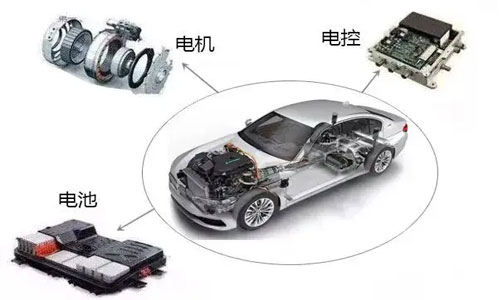
Battery Pack Integration with Chassis
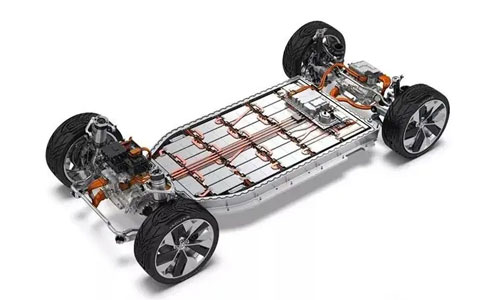
Classification and Composition of PACK Battery Pack: What is a PACK Battery Pack?
First, let's understand the rough distinction between lithium battery cells, modules, and packs:
Battery cell: The basic building block of a battery pack and battery module, typically providing voltage between 3V and 4V.
Battery module: Composed of multiple cells, forming a single physical module that provides higher voltage and capacity.
Battery pack: Usually composed of multiple battery modules, and also includes a battery management system (BMS), which is the final product provided by battery manufacturers to users.
Composition Classification of PACK Battery Pack:
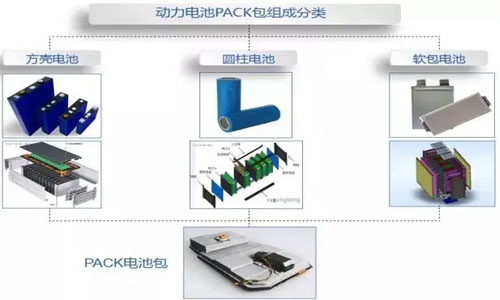
The core component of PACK is the battery cell, which is currently classified into three major types based on its shape: prismatic, cylindrical, and pouch (polymer battery). The positive and negative electrodes are enclosed in different types of housings.

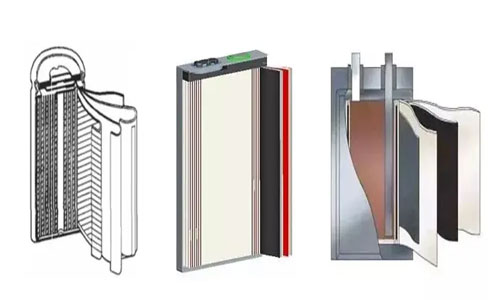
Battery module:
By assembling individual battery cells and using bus bars to connect cells in different series and parallel configurations, various methods such as screw locking, resistance welding, ultrasonic welding, ultrasonic aluminum wire welding, and laser welding can be used.
Considering factors such as production yield, efficiency, and internal resistance of connection points, laser welding has become the preferred choice for many battery manufacturers.
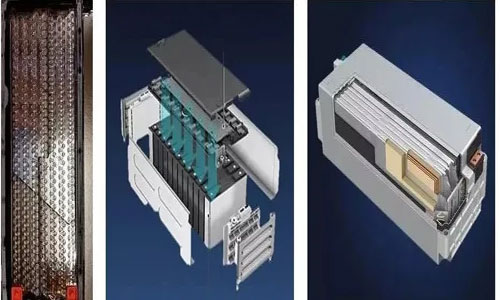
From left to right: cylindrical module, prismatic module, pouch module.
PACK Battery Pack?
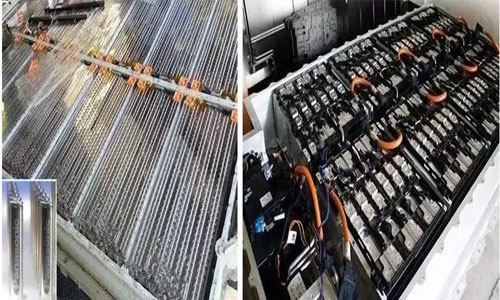
From left to right: cylindrical PACK, prismatic PACK.
Composition of PACK Battery Pack:
It mainly consists of battery modules, structural systems, electrical systems, thermal management systems, and BMS (Battery Management System).
Battery modules: If the battery PACK is compared to the human body, then the module is the "heart", responsible for storing and releasing energy to provide power to the vehicle.
Structural systems: Mainly composed of the top cover, tray, various metal brackets, end plates, and bolts of the battery PACK, it can be regarded as the "skeleton" of the battery PACK, providing support, mechanical impact resistance, mechanical vibration resistance, and environmental protection (water and dustproof).
Electrical system: It mainly consists of high voltage interconnectors or harnesses, low voltage harnesses, and relays. The high voltage harness can be considered the "major artery" of the battery pack, continuously delivering power from the heart of the power battery system to various components that require it. The low voltage harness, on the other hand, can be seen as the "neural network" of the battery pack, transmitting real-time detection and control signals.
Thermal management system: The thermal management system can be classified into four types: air-cooling, liquid-cooling, water-cooling, and phase change materials. Taking the water-cooling system as an example, it mainly consists of a cooling plate, cooling water pipes, insulation pads, and conductive pads. The thermal management system is like an air conditioning system installed in the battery pack.
BMS: Battery Management System is the "brain" of the battery. It mainly consists of the CMU and BMU.
CMU: Cell Monitor Unit is responsible for measuring parameters such as voltage, current, and temperature of each cell in the battery, and also performs functions such as cell balancing. Once CMU measures these data, it transmits the information through the "neural network" of the battery to the BMU.
BMU: Battery Management Unit evaluates the data transmitted by CMU. If any abnormality is detected, it takes actions to protect the battery, such as requesting a reduction in current or interrupting the charging/discharging circuit to prevent the battery from exceeding its allowable conditions. It also manages the battery's state of charge and temperature. Based on predefined control strategies, it determines the parameters and states that require warnings and sends them to the vehicle's control unit, ultimately notifying the driver.
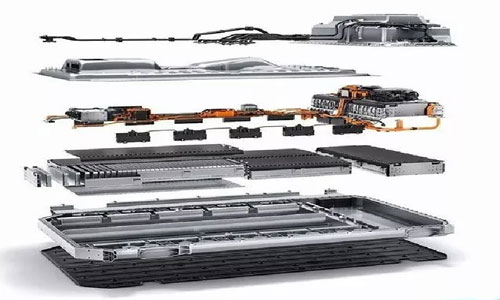
Exploded view of a battery pack (PACK).
01
"Process Flow"
The battery pack is the core energy source of new energy vehicles, providing the driving power for the entire vehicle. As a key component of new energy vehicles, its quality directly determines the overall performance of the vehicle. Lithium battery manufacturing equipment generally includes three types: front-end equipment, middle-end equipment, and back-end equipment. The precision and level of automation of these equipment directly impact the production efficiency and consistency of the products.
Although there may be different types of battery cells and modules, the composition and process flow of the pack are generally similar (although not all manufacturers follow the same process). The diagram below provides a reference for the pack assembly process.

Pack Assembly Process
It mainly consists of assembly process, airtightness testing process, software coding process, electrical performance testing process, etc.
02
"Production Line Introduction"
The pack assembly process involves flexible wiring and press-fitting, which are challenging to automate and have a lower cost-effectiveness ratio. Therefore, the automation level of the back-end equipment is relatively lower compared to the front-end and middle-end. However, it is compatible with three types of pack battery packaging: cylindrical, prismatic, and pouch.
The following stations may require automation: - Automatic loading of the lower shell - Automatic loading of the module into the shell - Fixing and tightening of the module - Installation and tightening of the upper cover - Automated application of A/B thermal conductive adhesive (depending on the process) - Automated application of sealing adhesive (depending on the process) - Unloading of finished products
Additionally, some processes such as copper plate installation, screw tightening, airtightness testing, and end-of-line testing may also require automation, but these are less common, and ensuring stability is more challenging.
There are two main types of operating modes for mass production equipment in the back-end pack assembly line:
01 AGV + Assembly Cart
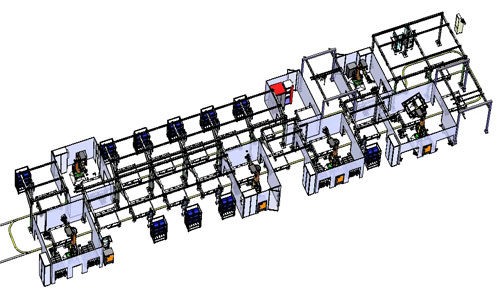
This mode was primarily used in vehicle factories in the past, but battery factories are now gradually adopting this mode.
AGV Conveyor Line
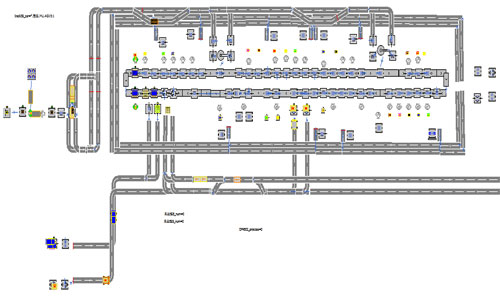
AGV Production Line Logistics Simulation
02 Conveyor Belt + Tray Mode
Roller conveyor line/friction roller conveyor line/multi-chain conveyor line
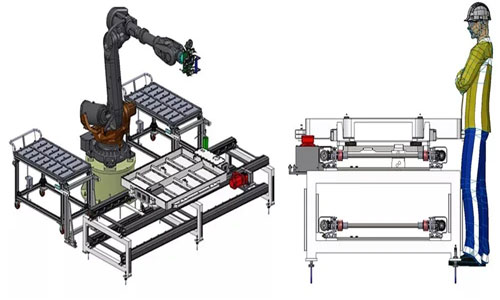
Left: Multi-chain conveyor | Right: Friction roller conveyor line
03
Conclusion
The above is a basic explanation of lithium battery pack (PACK) knowledge.
With the gradual maturity of the power battery industry, battery pack modularization technology will become increasingly mature. The development of battery pack technology involves multidisciplinary and multi-domain knowledge, requiring technical integration across disciplines. In summary, for automotive companies to achieve mass production of PACK products that fully meet the requirements of new energy vehicle standards in terms of lifespan, stability, reliability, and safety, a considerable amount of engineering practice, testing, and continuous product optimization and upgrading are still needed.
Contact: Pamela
Phone: +86 189 6365 3253
E-mail: info@industryprocess.com
Whatsapp:+86 189 6365 3253
Add: Yajing Industrial Park, No. 59 Shuangjing Street, Weiting Town, Suzhou Industrial Park
We chat
